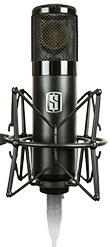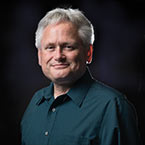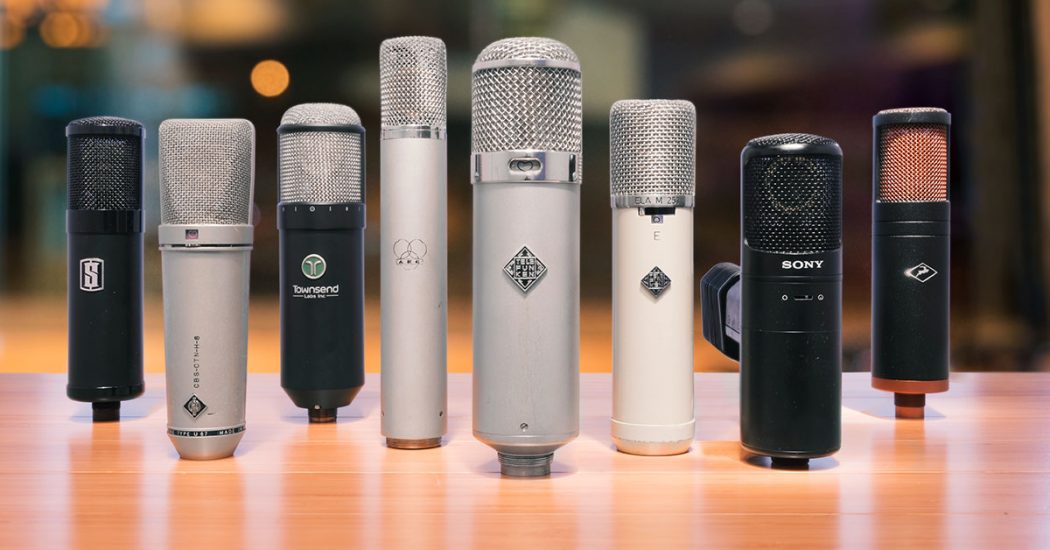
Is it possible to add some digital magic to an affordable solid-state mic and convincingly mimic the sound of an extremely desirable and expensive vintage tube mic? That’s a question that lots of people have asked. We decided it was time to answer that question for ourselves.
Let’s start by answering a fundamental question: What is a “virtual microphone”? A virtual microphone is, in fact, a “real” microphone that relies on digital signal processing (DSP) to create facsimiles of the sound pickup characteristics and frequency response of another microphone. These sonic facsimiles (commonly called emulations) are based on models created by testing the actual microphone and storing its characteristics as a preset, which is recalled typically through the use of a plug-in that is accessed within a workstation (DAW). By modeling a wide range of mics, the sound of very desirable and rare microphones can be accessed by recalling that preset. So now that we know that virtual mics are really modeling mics, let’s take a brief look at the history of mic modeling before we try to answer the question that everyone always asks:
“Is it possible for an inexpensive mic to accurately emulate the sound of a world-class vintage microphone?”
That question has been the subject of debate since 1999 when Andy Hildebrand (of Antares AutoTune fame) released the Mic Modeler plug-in, allowing any mic to run through a processor and emulate the sonic characteristics of other, typically more expensive, mics.
“Can you really take an SM57 and process it to sound like a vintage C12? How is that even remotely possible?”
In 2015, Steven Slate took the concept of modeling vintage mics to a whole new level, introducing the Slate Digital ML-1 Virtual Microphone System (VMS), which, according to Slate, is “a hybrid system that utilizes an extremely transparent condenser microphone, a sonically neutral preamp, and state-of-the-art digital processing suite that recreates the tone of classic microphones and preamps.” The key with the VMS was using their specific large-diaphragm condenser (LDC) and coupling it with a plug-in with presets that offered the user the coloration of vintage mics and preamps. The VMS was extremely affordable, compared not just to a single vintage microphone that could easily cost 10 times as much, but also in its possibility of replacing a whole mic locker full of vintage mics and preamps. A wide range of sounds was achievable by combining the mic with the VMS software that Slate says consists of the “Classic Tubes microphone module, which contains eight classic tube microphone models, along with the FG-73 British discrete preamp module, and the FG-76 German tube preamp module.” For the full list of models available for the Slate VMS, look here.
There were naysayers to be sure, as can be expected of any new technological advance, but there were also hundreds of engineers and home studio owners who listened and embraced it. The VMS has been an overwhelming success. And as the technology and models matured and public acceptance was secured, there were other companies that decided to offer their own interpretations based on modeling technology.

In 2015, Townsend Labs Inc. began offering their Sphere L22 Microphone Modeling System featuring the Sphere L22 microphone. According to Townsend, the L22 “models the characteristics of the most sought-after large-diaphragm condenser microphones with amazing accuracy and allows selection of different mics and patterns.” Combining the L22 dual-diaphragm microphone with the Sphere™ plug-in, users can emulate “the response of a wide range of mics, including transient response, harmonics, proximity effect and three-dimensional polar response.” For the full list of models available for the Sphere L22, look here.

In 2017, Antelope Audio debuted their Edge Large-diaphragm Modeling Microphone
that also offers dual-diaphragms and dual output and, when used with their modeling software, allows the user to “precisely model every polar pattern on every mic, with accurate on- and off-axis responses, for true multi-dimensional mic modeling.” The Edge (and its companion SDC, the Verge) is designed to work with all preamp-equipped Antelope Audio interfaces. For the full list of models available, look here.
We’ve anticipated doing this comparison for years now, and once all three virtual mic systems were in hand and we saw for ourselves that they worked satisfactorily, we decided the time was right to listen for ourselves. More importantly, we wanted to give you the ability to pull a chair up to the console and hear exactly what we heard, by offering you the 24/96 sound files that you can download and audition in your own control room.
The Goal
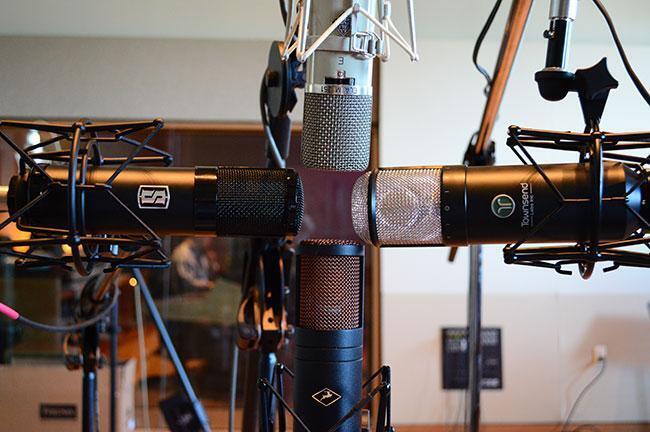
The singer’s view of the mic setup. The headbaskets of the mics were grouped together as closely as possible with all the diaphragms in the same plane.
Our plan was to put all the virtual mics side by side through an identical signal path and listen to them, each using its emulations, right alongside the vintage original mics that they were emulating. I will admit right up front that I had never used any of the virtual mics in the studio before.
The Challenge
As with any shootout, the true test is making sure that all the mics are presented fairly. Sure, there have been lots of comparisons posted online by the mic makers, but we wanted to do this for ourselves with no influence from the manufacturers. We took each of the mics out of its case and started by installing the software and reading the included documentation, just as a customer would do when buying one of these mics.
The Source
We debated about many possible sound sources (drums, electric guitar, acoustic guitar, tambourine, piano), but we ultimately decided that the majority of these mics will end up being used on human voice, so that’s what we chose to audition. To keep the presentation as close to a single-variable test as possible, we set up all the mics as close as physically possible to each other. In order to accommodate a single voice singing in uniform proximity to all the mics, we put the head grilles together in an imaginary box, with all the mics surrounding the focal point where the singer would sing. This ensured that the axis of arrival for each mic was identical. The female voice was 12″ in front of the mic without a pop filter, while the male voice used a pop filter. Each mic was angled slightly so that the diaphragms of the mics were pointed exactly at the lips of the singer. That way we could use a single performance for each grouping of mics, so all the U67 samples are the same performance, all the 800G samples are the same performance, etc.
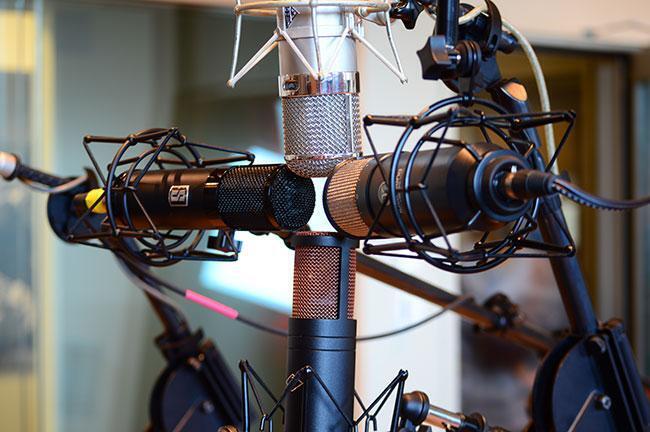
The mics were angled so that the focal center was exactly 12″ in front of the mics. At that distance, all the mics were uniformly on-axis.
The Setup
Here are the steps we took to make sure the sound of the mics you’ll hear in these recordings is as true and uniform a representation of the mics as we could possibly make them. If you read about how we recorded our Vocal Mic Shootout, you already appreciate how many decisions there are to make.
The Mics
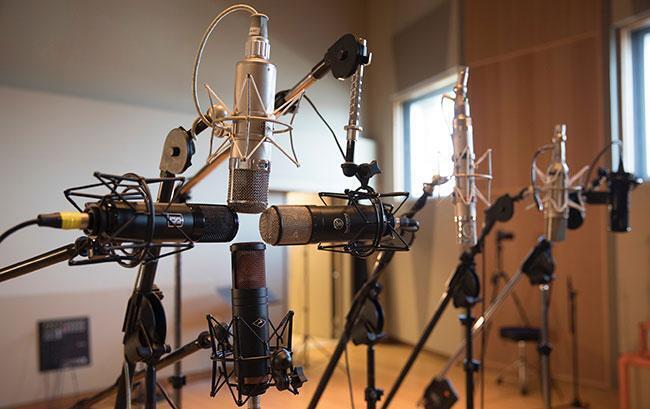
All the vintage and virtual mics staged and ready to go.
As we reviewed the list of vintage mic models offered by Slate, Townsend, and Antelope, here are the ones we decided to audition and the vintage mics to compare them to. We chose from the models that were available at the time of the session. (Antelope released new mic models just days after we completed our sessions.)
| Vintage Originals | Slate | Townsend | Antelope |
|---|---|---|---|
| Neumann U 67 | FG 67 | LD-67 | Berlin 67 |
| Sony C-800G | FG 800 | LD-800 | Tokyo 800T |
| AKG C12 | FG 12 | LD-12 | |
| Telefunken ELA M251 | FG 251 | LD-251 | |
| Telefunken U47 | FG 47 | LD-47K | |
| Shure SM57 | DN-57 | ||
| Shure SM7 | FG M7 |
For the vintage mics, we reached out to our friends at Blackbird Audio Rentals in Nashville, Tennessee and selected the following mics from their arsenal.
- Neumann U 67 — Serial # 1787
- Sony C-800G — Serial # 10324
- AKG C12 — Serial # 882
- Telefunken ELA M251 — Serial # 1109
- Telefunken U47 — Serial # 1502
The Studio and Personnel

Female vocalist Addison Agen singing in Sweetwater Studio A.
For these recordings, we worked in Sweetwater’s Studio A, a large Russ Berger–designed room with well-balanced acoustics, not too live or too dead. It’s also very, very quiet. The female vocal was recorded by Mark Hornsby, Shawn Dealey recorded the male vocalist, and the editing and assisting were handled by Nathan Heironimus and Bobby Dellarocco, respectively.
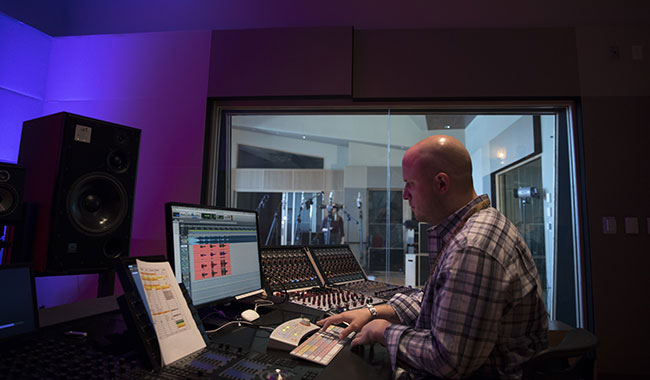
Mark Hornsby recording Addison Agen in Sweetwater Studio A.
The Gear

All mics were recorded using the incredibly clear and transparent Millennia HV-3R mic preamp. We recorded through the industry-standard Avid HD interface set to 24-bit/96kHz with an Antelope Trinity master clock.
The Process
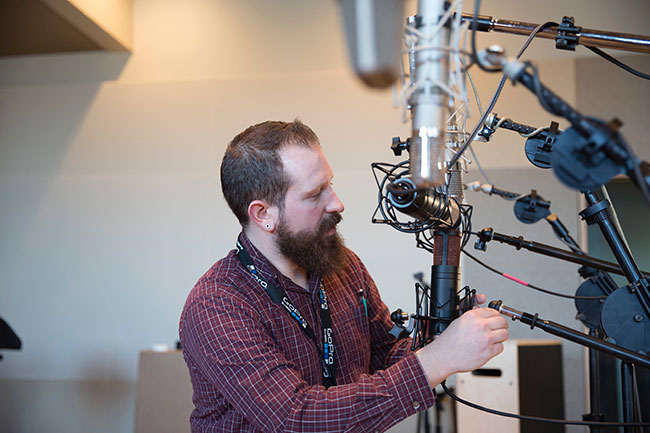
Engineer Bobby Dellarocco setting up all the mics.
The mics were set up in a square configuration with the head baskets closer together, with all the diaphragms at a uniform distance from the singer’s lips. For the female singer, that distance was 12 inches. For the male singer, we used a distance of 8″ and added a metal screen pop filter. All the tube mics were set up and powered on for over 12 hours before we started recording.
NOTE: Each vintage mic and its corresponding virtual mics were recorded in a single pass. We did this so that you are hearing the exact same pass on all the mics in a group. So all the female C800G recordings are one single performance. All the U67 recordings are one single performance. You’ll notice differences between the takes on each group of mics, but within each group, they are all the identical performance.
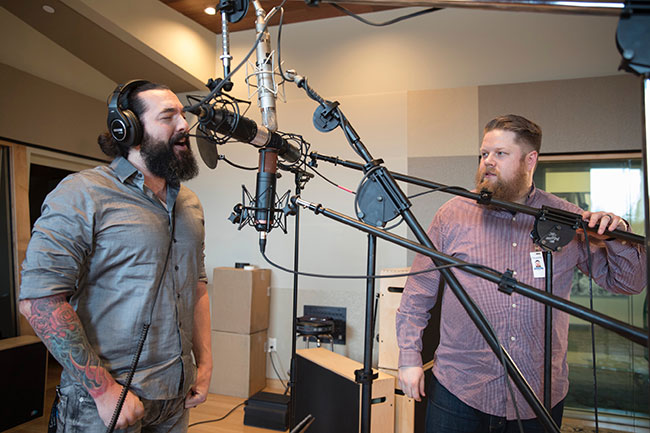
Engineer Shawn Dealey (right) confirming the mic height for male vocalist Mike Stanley.
The Artists
For our singers, we chose vocalists Addison Agen and Mike Stanley, both artists who are recording in Sweetwater Studios. Each used music tracks from their own projects.
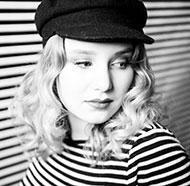
Addison Agen
Addison, a Fort Wayne native, finished a hugely successful run on NBC’s vocal talent show The Voice as the runner-up. Since then she has been working with Mark Hornsby and Phil Naish on her upcoming album. Addison has a wonderful voice, especially considering she’s a teenager. For this session Addison is singing an excerpt from “Are You Listening” off her new album, written by Gabe Dixon: Third and Verse Music Publishing (BMI)/Five R Music (BMI) administered by Kobalt, Alyssa Bonagura: Queens Blvd. (ASCAP), Davis Naish: Hillbilly Science & Research (BMI).
Millions of people heard Addison Agen for the first time as a contestant on NBC’s The Voice. The 17-year-old Fort Wayne–based singer/songwriter has been working with producers Mark Hornsby and Phil Naish at Sweetwater Studios. Her upcoming project will feature six of Addison’s original compositions.
The sessions used Sweetwater’s stable of session players — Don Carr on guitar, Nick D’Virgilio on drums, Phil Naish on keys, and bassist Dave Martin. Addison’s project features strings recorded at Abbey Road Studios. Addison’s record sounds amazing, and Sweetwater is delighted to help her realize her musical ambitions.
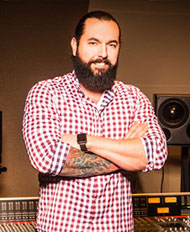
Mike Stanley
Mike has been the front man for Conflict of Interest, a successful national touring rock band, for the past 14 years. Mike moved to Fort Wayne in 2017 to work with Sweetwater Studios as the Director of Sales/Artist Relations. Before that, he was a combat medic in the United States Army for eight years. Mike has a very powerful voice that provides a striking contrast to Addison. You may remember Mike as the singer in the heavy metal version of Taylor Swift’s Ready For It. For these recordings he is singing the song “World on Fire” by his band Conflict of Interest, written by Mike, with Jason (Space) Smith and Andrea Wasse.
Calibrating the Mics
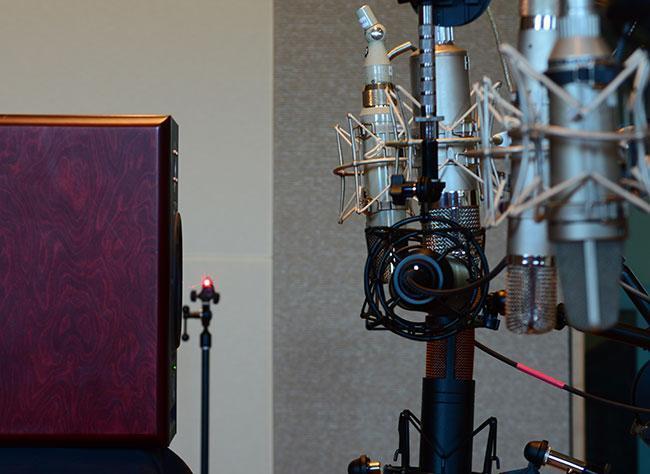
We used a speaker and a 1kHz calibration tone to set uniform levels from all the mics.
The signal source for calibration was a Focal Solo6 Be that was producing a 1kHz tone at 102 dB SPL, aimed at the center of the mic cluster. (The 1kHz tone is below the crossover frequency of the Solo6 Be.) Then the preamp gain was adjusted so that the input signals to Pro Tools were all within 1dB. Using the ~1dB gain steps on the Millennia meant that final level calibration could be done with Clip Gain to achieve identical microphone levels. (We considered the alternative of using another gain stage or variable attenuator in the signal path after the preamp, but we didn’t want to introduce any possible coloration in the microphone signal path.)
So Why Are the Levels Different?
I never know what I’m going to learn when I launch into these gear comparisons, but I know from experience that I’ll discover something unexpected. It never fails. For this comparison, I knew that matching levels would be critical as it always is. What I did not expect was the difference among the ways the mics responded dynamically. We calibrated all the mics for uniform levels with a static 1kHz tone. But then we noticed that the apparent levels were not identical from mic to mic, even with each mic placed the same exact distance from the same exact performance. So the dynamic response of the mics (their interpretation of the singer’s dynamics) varied from mic to mic. We decided to calibrate the levels so that all the performances peaked at exactly the same value. If you set all the meters to Peak Hold, then the loudest section of each vocal track will peak at -3.0dB. You’ll likely notice, as we did, that the apparent levels from mic to mic will vary depending on the voice range and intensity. We debated about trying to make the levels uniform by some compression trickery but decided instead to present them just as they were recorded, with a static calibration. If you want to make level adjustments among the different microphones, please download the 24/96 files and use the faders in your DAW to adjust the volume from mic to mic.
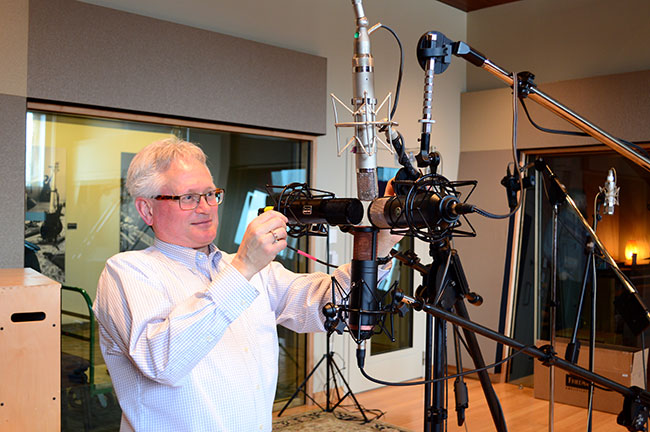
Lynn Fuston confirming the diaphragm alignment of the mics before a vocal pass.
What to Listen For
- Do you hear more low end on a particular mic or model compared to the vintage original or the other modeling mics? More highs, more mids, more presence?
- Listen for the dynamic response of the mics — the differences in the loudest and softest passages in a performance, as well as the subtle dynamic variations within a phrase.
- Do the mics pick up the same amount of room ambience? In the mixed tracks, room ambience is harder to hear, so compare the solo’d tracks.
- Is there audible distortion? This is always a factor and is more obvious when a singer hits the mic hard with a loud passage or note. Does each mic stay clean with louder vocal level or does it start to sound strained or crunchy?
Let’s Listen
I suspect that everyone reading this article wants to know our interpretation of the results. Do the models sound like the original mics? Is one mic system superior to the others? Do they come close, or even close enough, to the originals so that you would have difficulty telling them apart within a music bed? Those are good questions and ones we hope you can answer when you finish listening to these samples below, presented as 320k MP3s. The differences and similarities are clear even on these MP3s, but for maximum fidelity and the most revealing results, download the 24-bit/96kHz audio clips and listen to them in the enclosed Pro Tools session or as audio files to load into your own DAW. For the solo vocal clips, there is no processing (no EQ, compression, or reverb).
Download the Virtual Mic Shootout for Pro Tools
Download the Virtual Mic Shootout_Audio Files Only
After you listen, click the link below and share your opinion about the sound of these mics on the Gearspace Virtual Mic Shootout Forum.
Join the Virtual Mic Shootout conversation on Gearspace.com
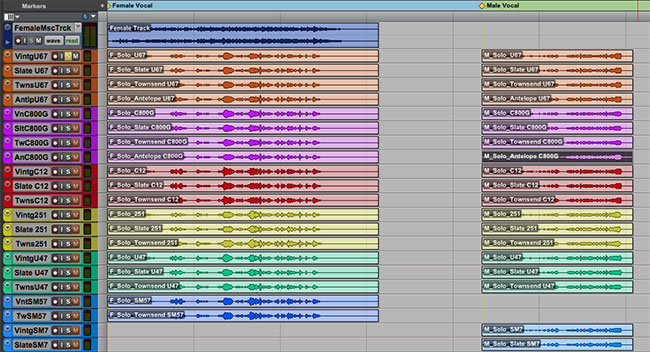
Pro Tools session with vocal files.
Female Voice Solo (unprocessed)
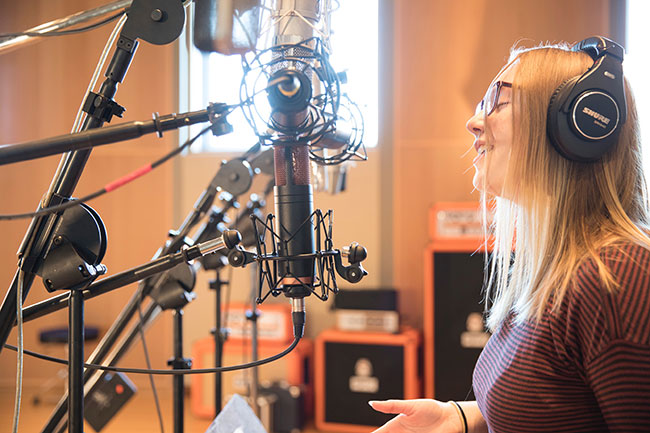
U67
Vintage Neumann U67
Slate FG 67
Townsend LD-67
Antelope Berlin 67
C800G
Vintage Sony C800G
Slate FG-800
Townsend LD-800
Antelope Tokyo 800T
C12
Vintage AKG C12
Slate FG 12
Townsend LD-12
251
Vintage Telefunken 251
Slate FG 251
Townsend LD-251
U47
Vintage Telefunken U47
Slate FG 47
Townsend LD-47K
SM57
Vintage SM57
Townsend DN-57
Female Voice (processed) in Music Mix
U67
Vintage Neumann U67
Slate FG 67
Townsend LD-67
Antelope Berlin 67
C800G
Vintage Sony C800G
Slate FG-800
Townsend LD-800
Antelope Tokyo 800T
C12
Vintage AKG C12
Slate FG 12
Townsend LD-12
251
Vintage Telefunken 251
Slate FG 251
Townsend LD-251
U47
Vintage Telefunken U47
Slate FG 47
Townsend LD-47K
SM57
Vintage SM57
Townsend DN-57
Male Voice Solo (unprocessed)
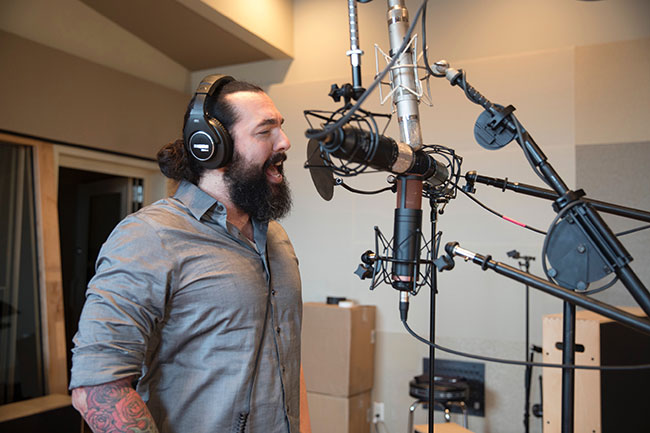
U67
Vintage Neumann U67
Slate FG 67
Townsend LD-67
Antelope Berlin 67
C800G
Vintage Sony C800G
Slate FG-800
Townsend LD-800
Antelope Tokyo 800T
C12
Vintage AKG C12
Slate FG 12
Townsend LD-12
251
Vintage Telefunken 251
Slate FG 251
Townsend LD-251
U47
Vintage Telefunken U47
Slate FG 47
Townsend LD-47K
SM7
Vintage SM7B
Townsend DN-57
Male Voice (processed) in Music Mix
U67
Vintage Neumann U67
Slate FG 67
Townsend LD-67
Antelope Berlin 67
C800G
Vintage Sony C800G
Slate FG-800
Townsend LD-800
Antelope Tokyo 800T
C12
Vintage AKG C12
Slate FG 12
Townsend LD-12
251
Vintage Telefunken 251
Slate FG 251
Townsend LD-251
U47
Vintage Telefunken U47
Slate FG 47
Townsend LD-47K
SM7
Vintage SM7B
Townsend DN-57
In Conclusion — What We Learned
These mics require software to perform their modeling magic. They are not, I repeat NOT, plug-and-play solutions. If you are accustomed to opening up a box, putting the mic on a stand, plugging the cable in, and hitting record, these don’t work that way. You will have to register, download, install, and authorize the plug-ins in order to make these mics work as intended. That can range from easy to challenging depending on the mic. The trade-off is that once you have finished the first-time install and have it working, you have an incredible range of sonic options literally at your fingertips.
These virtual mics offer astounding value for the price. Any one of the vintage mics included here can cost you $7,000–$35,000 or more on the used market. Only one of them has been in continuous production since it was introduced in 1992 — the Sony C800G. Neumann has now re-introduced the U 67 but it will still cost you many thousands of dollars.
Buying vintage mics can be a risky business, especially when they are 40–50 years old and you don’t know where they’ve been or the conditions they’ve been used or stored in.
On the other hand, if you do pony up for a super-expensive and rare vintage mic, you’ll know that you have a collectible that will rarely go down in value.
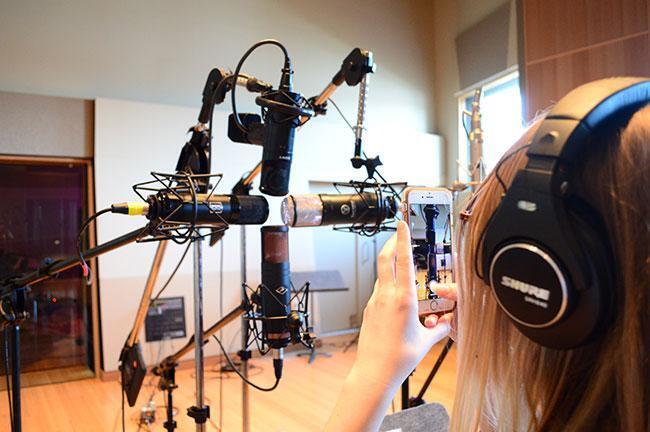
Addison Agen snapping a photo of the day she got to sing into $50,000 worth of microphones!
On the other other hand, there’s the cost of maintaining vintage mics. Just like vintage cars, they aren’t static. You can’t keep it in a case for 20 years and expect to pull it out unchanged. Some parts degrade, whether in use or not. And some parts for these mics are somewhere between rare and unobtainable. There are tubes like the VF14 (used in a U47) that command prices between $750 and $3,000, and that’s a part that is absolutely crucial to the sound of the mic.
Then there’s the software angle. If you buy a regular mic, it will work as long as you have a cable and power supply, likely for decades to come. But software works only as long as you have the supported computer. Anyone else ever bought a plug-in or software program that was orphaned after several years? I have. Then you’re faced with maintaining a “vintage” (read OLD) computer just to keep your software running (been there, done that as well), or losing your investment and moving on to something else. But if you get the value you anticipated during the lifespan that the product works, then you’ll come out just fine.
There are lots of variables to consider. The bottom line is whether you can get the sound you’re after at a price you can afford. Take a listen to these audio clips and let your ears decide.
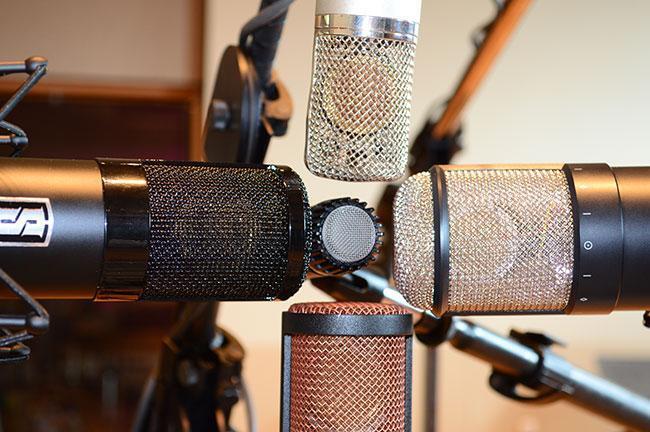
Yes, you can spend $1500 and emulate the sound of an SM57. And of course we had to try it.

“So Shawn, how does it sound…?”


